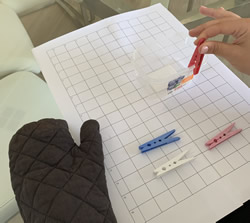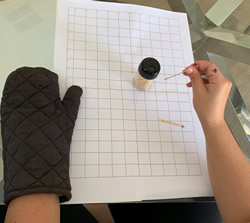Implementing upper limb constraint induced movement therapy (CIMT) (online)




This online workshop is typically run over 3 sessions (3 x 4 hours) and accepts up to 30 registrants.
Target audience: Allied health professionals including physiotherapists, occupational therapists and allied health assistants, intending to offer a 2-3 week CIMT upper limb program to clients with stroke or acquired brain injury.
Pre-reading and homework will be provided in advance to participants
General Information
This online workshop provides an introduction to constraint induced movement therapy (CIMT) as an intervention for arm recovery after stroke and acquired brain injury and processes to support the implementation of CIMT into practice. Constraint-induced movement therapy (CIMT) is recommended in Australian (and other) stroke guidelines as an evidence-based therapy for arm recovery. Yet national audits show that only 12% of eligible Australian stroke survivors receive CIMT. Barriers to CIMT delivery include limited knowledge, skills, confidence, personnel and equipment. This workshop will enable professionals to develop their knowledge and skills in delivering a CIMT program and develop implementation strategies to support them to apply this knowledge to their practice.
The workshop will describe what should be included in a CIMT program [beyond a mitt], how to structure and progress training during a CIMT program, how to measure participant change and overcome common barriers to delivering CIMT, particularly in public health settings. Video examples will be used to illustrate CIMT program components.
During the workshop, research will be presented and practical examples of evidence based implement strategies to support professionals and teams to run and sustain CIMT programs in routine practice.
Learning Objectives
By the end of the workshop, participants will be able to:
Identify
people that are eligible for CIMT
Name and describe
the key components of CIMT which include shaping, functional task practice, mitt wearing and a transfer package
Identify
the resources needed to deliver CIMT with fidelity including staff, space and equipment
Name
outcome measures that are commonly used before and after a CIMT program
Identify
online educational resources that can be used to prepare for delivery of CIMT programs
Describe
the pros and cons of different models of CIMT delivery including 1:1, group and online/virtual
Presenters
Workshop Timetable
Part 1 (4 hours)
| What is CIMT; who may be eligible for a CIMT program; the evidence supporting the use of CIMT for arm recovery after stroke and acquired brain injury. Key components of a CIMT program including shaping practice, functional task practice, mitt wearing and the transfer package will be described. Participants will be provided with homework to develop and progress shaping tasks prior to the next session. |
Part 2 (4 hours)
| Review of registrants homework tasks and planning for delivering a CIMT program; planning a daily timetable/schedule during a CIMT program, use of the Motor Activity Log both as part of the CIMT transfer package and as an outcome measure. Models of CIMT delivery will be described from the literature to support application to different clinical contexts (1:1 or group; clinic-based or home-based or telehealth). Outcome measures commonly used within a CIMT program will be discussed as well as the necessary equipment, space, support and personnel need to run a program. The session will conclude with problem solving and Q&A addressing any ongoing barriers to CIMT implementation and online support from a community of practice will be established. |
Part 3 (2 hours)
| Follow-up to discuss how registrants managed implementing their CIMT programs, Q&A and problem solving session, online support from a community of practice. |


